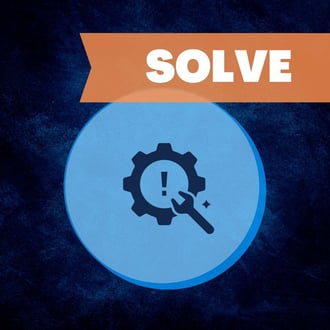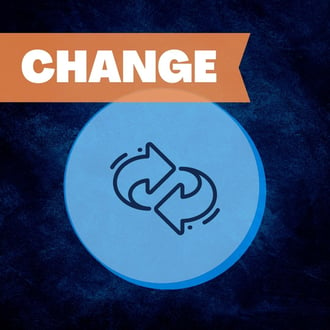How Do You Use The 5 Moments of Need to Write Better Help Articles
You’ve been working on filling your ScreenSteps site with policies and procedures, but you keep running into a few problems.
Maybe you have your procedure documents, but nobody is using them. Or maybe your employees can’t find the answers in your knowledge base they are looking for.
Then there’s the scenario where your employees are finding and using your guides, but they say it doesn’t solve the problem. There is just too much information that needs to be included in the guide and so they can’t locate the answer they are searching for.
None of these situations are ideal when you are putting all this effort into documenting your procedures. It can be frustrating and disheartening when the guides don’t seem to be working when you expect them to be helpful.
What types of articles should you include in your knowledge base? How should you break them down so employees can get the answers they need?
As the co-founder of ScreenSteps, I’ve talked to many companies who struggle with the same problem. That’s why recently, we have started using the 5 Moments of Need. The 5 Moments of Need help us design help guides that improve learner performance instead of just containing information.
While not all of the 5 Moments call for a help guide, they all need different learning assets in order to help employees in each situation.
Below, I give a brief overview of the 5 Moments of Need. Then I share when you would need to create help guides for each of the moments.
What are the 5 Moments of Need?
Bob Mosher & Conrad Gottfredson created the 5 Moments of Need methodology to help Learning & Development teams identify the learning opportunities for employees.
Here is a quick summary describing each of the 5 Moments of Need:
- Apply – When employees need to put what they learn into action
- Solve – When employees need to figure out how to handle an unexpected scenario
- Change – When employees need to learn how to do something a different way
- New – When employees are introduced to information for the first time
- More – When employees build off of previous knowledge
These 5 moments enable both traditional classroom training as well as workflow learning, where employees are empowered to learn while performing their jobs.
Why distinguish between the different "moments"?
Before you even start writing an article for your knowledge base, the 5 Moments of Need will help you figure out the answers to these questions:
- When will this content get used?
- Who will use it?
- Why will they use it?
- How will they find it?
- What else will be going on?
- How much do they already know?
By determining where the guide fits in the 5 Moments of Need, you are working with the end in mind. It allows you to focus on the content of your article.
How do you use these "moments" to improve your help guides?
The 5 Moments of Need help you recognize and identify areas where your employees could use additional training (whether that is a course or on-the-job training).
When creating content, be clear about which moment you are addressing. There can be overlap in these moments, so you need to understand the intent of the learning materials you create.
You don’t necessarily need help articles for each of these moments, but the moments will help you recognize when your employees need learning assets. Those could be workflow articles, decision trees, self-paced online courses, etc.
In those different moments, you want to include the information employees need without additional information. When writing learning assets and help guides, ask yourself, “Which moment am I trying to address?” And write only to address that moment.
When you think of it in this framework, it helps you design something that will drive the performance outcome you are trying to achieve.
It’s just like when you are hiring for a job. You need that specific role fulfilled, so your job description is going to be specific to attract the right people with the right skills. That’s how your guides are in these Moments of Need.
Apply: To help employees use skills they learned in training
Mosher & Gottfredson consider Apply the center of the 5 Moments of Need. It’s at this moment that your employees use knowledge to perform and produce results for your business.
In the case of procedures, during the Apply moment, employees use the background information they learned about your knowledge base during the New and/or More training to complete daily tasks they encounter.
 For example, during New or More training, your employees would have learned how to use keywords to search your knowledge base for a help guide and how to navigate articles successfully. During the Apply phase, they use those skills to complete tasks, like “How to reschedule an appointment.”
For example, during New or More training, your employees would have learned how to use keywords to search your knowledge base for a help guide and how to navigate articles successfully. During the Apply phase, they use those skills to complete tasks, like “How to reschedule an appointment.”
Note: They don’t have the process memorized for rescheduling appointments, but they know how to get the information they need so that they can complete this task. In this Apply moment, they are learning new processes by doing.
The format for teaching the Apply moment is documented procedures that are stored in your knowledge base. These can be help guides, workflow articles, decision trees, checklists, or other forms of documentation.
Apply means you are doing the steps in the workflow without needing to stop. It’s fluid. It’s easy to follow. You don’t interrupt your flow.
You want these guides to be clear enough that if your employee were on the phone with a customer, they wouldn’t need to hang up in order to find an answer and follow a process. The processes are broken down into each step. If employees pull up these procedures and follow them, they will be able to perform the tasks successfully at the moment of Apply.
What to include in an Apply article
Remember: The key information you need to include in an Apply article is ONLY the steps or process to complete a task. Approach writing this moment with a bulleted list mentality.
| Include | Leave Out |
|
|
🔍 Related: 5 Moments of Need: How to Write “Apply” Learning Assets in ScreenSteps
Solve: To show employees how to troubleshoot
Solve is similar to the Apply moment. The difference is your employees are encountering problems during the process. These are unexpected situations that require them to troubleshoot the problem.
How will they solve problems on their own? What content is going to help them solve problems on their own?
 In some cases, employees need to understand how everything in a system works to be master troubleshooters. This is solving new problems that haven’t yet been identified. That takes a high level of mastery and the learning resources are quite different (and often require a LOT of experience).
In some cases, employees need to understand how everything in a system works to be master troubleshooters. This is solving new problems that haven’t yet been identified. That takes a high level of mastery and the learning resources are quite different (and often require a LOT of experience).
In other cases, the problems have already been discovered and the solutions are already worked out. Employees just need to know how to identify the problem and identify the appropriate steps for solving it. This is lower-level and can be easily addressed with good guides.
During Solve moments, employees can use troubleshooting guides. These are best formatted as interactive workflow articles in your knowledge base. The interactive workflows are more sophisticated and less confusing decision trees.
Workflow articles walk employees through the right steps by asking a series of questions. Employees’ answers navigate them to the next question to help diagnose the problem. Then it leads them to the right procedure for resolving the issue in this particular moment.
What to include in Solve article
In a Solve scenario, the goal is to resolve the issue. Your employees don’t need to understand every nuisance of why the problem happened. Here are a few things to make sure you include and a few to leave out.
| Include | Leave Out |
|
|
Change: To keep employees up to date on current procedures
Over time, you will need to update your policies and procedures. That happens in every company — especially technology businesses — as they evolve. And when there are changes in your company, your employees have to change their behaviors to align with the new protocols.
How will they adapt when procedures or information changes?
 When you choose the right knowledge base for your business, you will spend less time in additional training (ie: lunch and learns, etc.). That’s because most updates are slight tweaks to procedures instead of an overhaul.
When you choose the right knowledge base for your business, you will spend less time in additional training (ie: lunch and learns, etc.). That’s because most updates are slight tweaks to procedures instead of an overhaul.
This isn’t “new” because employees already have the background knowledge. If a process changes in a system, employees already know (a) the process, (b) the system — there’s just a tweak to the steps/process that needs to occur.
Think about: Can you just update an article or does it need to be resolved in the classroom?
For example, if your employees are familiar with nCino and there is a slight change to a procedure in the system, you don’t need a whole new training. You just need to update the guides your employees use and inform them of the change.
Then your employees have to change their behavior. They’ve formed habits around this procedure in your system, but now they need to get in the habit of doing it another way.
Update your existing documents — including your Apply and Solve guides — to help with your change moments of need. Then send out a notification via your knowledge base, email, or another form of communication.
What to include in a Change article
The Change articles are meant to help employees switch their behaviors. Often, this means that employees already have experience, but they need to slightly adjust their actions because of policy or procedure changes. Here are a few items to include and leave out in these articles.
| Include | Leave Out |
|
|
New and More: Before launching new software
If you do need to explain why a change has happened, create that in a separate article. In most cases, your employees will only need to read this information once, not every time they go through the updated procedure.
Traditionally, most companies are accustomed to addressing the New and More moments.
 An important distinguishing feature for these moments is these teaching opportunities are done before an employee needs that information. You are anticipating your employees' need for background information and basic skills in order to complete assignments, so you train them ahead of time.
An important distinguishing feature for these moments is these teaching opportunities are done before an employee needs that information. You are anticipating your employees' need for background information and basic skills in order to complete assignments, so you train them ahead of time.
New and More training are typically done in a classroom setting, whether that is virtually or in-person. Teaching in a classroom allows trainers to instruct large groups of people and cover important background information that prepares employees for in-the-moment training (the other three moments).
Other common formats for New or More training include self-paced courses, scenario-based training, and eLearning options. Typically, these training options are what you would use a Learning Management System (LMS) for.
 During New and More training, you want to include information that won’t be included in your documentation (ie: help guides, workflows, etc.).
During New and More training, you want to include information that won’t be included in your documentation (ie: help guides, workflows, etc.).
In this case, that background information would be training your employees the skills on how to use your knowledge base. That includes how to search and follow the instructions in a guide.
When you address the Apply, Solve, and Change moments with useful guides, your New and More training times can be cut down dramatically.
How to organize your 5 Moments of Need articles
As an L&D leader, it can be difficult to know how to provide your employees with all the training they need to do their job.
With the 5 Moments of Need methodology, you can identify those critical moments of learning so that you can provide learning resources to your employees. To do that, it is best to have a robust knowledge base.
To best cover these 5 Moments of Need, it is helpful if you have two software tools:
- A knowledge base that serves as a one-stop shop for all your knowledge
- An LMS for training on background information
However, depending on your knowledge base software or your LMS, you may be able to accomplish all 5 Moments of Need with one of the two tools.

At ScreenSteps, we have customers use our knowledge base software for all 5 Moments of Need, but we specialize in Apply, Solve, and Change.
ScreenSteps provides in-the-moment support. In ScreenSteps you can use the ScreenSteps Browser Extension to suggest articles based on the context where the employee is working. Employees have the answers and assistance at their fingertips.
Does your knowledge base help you address these 5 Moments of Need? If you want to create, organize, and deliver information to your employees when they need it, consider getting a knowledge base. Click the link below for 5 tips to help you choose the best knowledge base software for your company.



